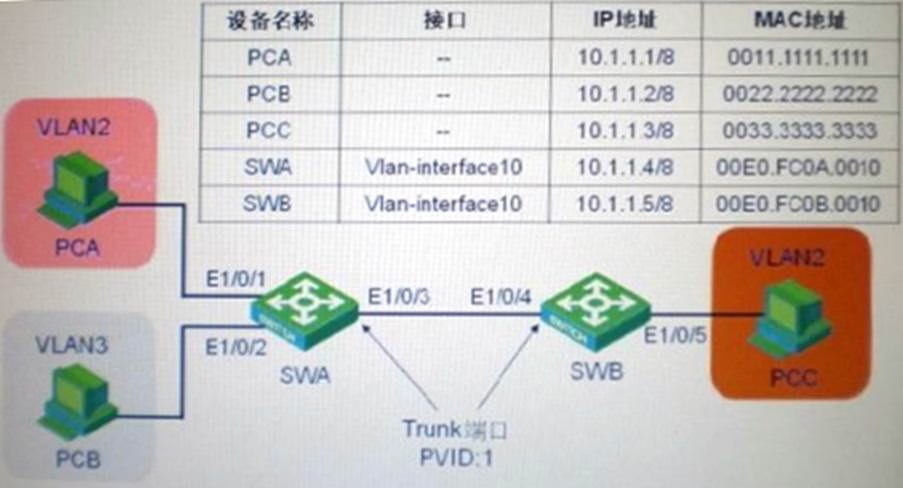In the switching network shown in the figure, VLAN 10 is set as the Super VLAN on the switch SWA, and VLAN 2 and VLAN 3 are sub VLANs of VLAN 10. VLAN, port Ethernet1/0/3 is a Trunk port, PVID is VLAN1, and all VLANs are allowed to pass; VLAN2 and VLAN20 are created on switch SWB, port Ethernet1/0/4 is a Trunk port, PVID is VLAN1, and all VLANs are allowed to pass. After setting the IP addresses of each device as shown in the figure, it can be determined that which of the following statement is correct?
In the switching network shown in the figure, VLAN 10 is set as the Super VLAN on the switch SWA, and VLAN 2 and VLAN 3 are sub VLANs of VLAN 10. VLAN, port Ethernet1/0/3 is a Trunk port, PVID is VLAN1, and all VLANs are allowed to pass; VLAN2 and VLAN20 are created on switch SWB, port Ethernet1/0/4 is a Trunk port, PVID is VLAN1, and all VLANs are allowed to pass. After setting the IP addresses of each device as shown in the figure, it can be determined that which of the following statement is correct?




A . PCA’s message enters from SWA’s Ethernet1/0/1 port and exits from Ethernet1/0/3 port without a tag
B . PCA’s message enters from SWA’s Ethernet1/0/1 port and exits from Ethernet1/0/3 port with VLAN Tag VLAN 1
C . The PCA message enters from the Ethernet1/0/1 port of SWA and comes out from the Ethernet1/0/3 port with the VLAN Tag of VLAN2
D . The PCA message enters from the Ethernet 1/0/1 port of SWA and comes out from the Ethernet 1/0/3 port with the VLAN Tag of VLAN 10.
Answer: C
Latest GB0-372-ENU Dumps Valid Version with 432 Q&As
Latest And Valid Q&A | Instant Download | Once Fail, Full Refund

